Buy the photo Giant Petrels - The Dragons of Antarctica by Kai Müller on canvas, ArtFrame, poster and wallpaper, printed on demand in high quality.
About "Giant Petrels - The Dragons of Antarctica"
by Kai Müller
About the artwork
Southern giant petrels are distantly related to the albatrosses: they are tube-nosed with a peculiar beak that looks as if it was pieced together from several pieces of horn. On top, the nostrils sit as a double tube that serves to excrete the salt from the seawater ingested when drinking. This desalination plant (which all tube-nosed creatures have, including albatrosses) allows them to spend their entire lives at sea. They actually only come on land to breed - otherwise they can be found on the open sea, in the stormy Southern Ocean, where they sail stiffly but elegantly over the waves with very few wing beats.
As the name suggests, giant petrels are fairly large animals. Their European relatives, the fulmars, look like dwarfs in the face of this largest of all petrels: they have a body length of over 90 cm and a wingspan of over two metres. The beak alone can be 12 cm long and their webbed feet are about the size of a human hand.
On the high seas, the GPs feed on everything that floats on or just below the water surface: krill, squid, fishing waste and other dead things. But when the seals give birth in the summer, it makes a lot more sense for them to patrol the beaches. The older males in particular are not just pure scavengers, but rather unscrupulous hunters who specifically target and kill individual animals.

About Kai Müller
For as long as I can remember I have always been drawn to the beauty of the environment and the wild spirit of wildlife. However, my love for nature and wildlife photography began a few years back after a series of travels coupled with my studies in design. .. Read more…
 Netherlands
Netherlands Ordered in March 2019
Ordered in March 2019
 Netherlands
Netherlands Ordered in November 2020
Ordered in November 2020
 Germany
Germany Ordered in September 2023
Ordered in September 2023
 Germany
Germany Ordered in February 2021
Ordered in February 2021
 Netherlands
Netherlands Ordered in June 2019
Ordered in June 2019
 Germany
Germany Ordered in July 2019
Ordered in July 2019
 Netherlands
Netherlands Ordered in August 2021
Ordered in August 2021
 Netherlands
Netherlands Ordered in August 2023
Ordered in August 2023
 Germany
Germany Ordered in March 2021
Ordered in March 2021
 Netherlands
Netherlands Ordered in January 2021
Ordered in January 2021
 Netherlands
Netherlands Ordered in March 2020
Ordered in March 2020
 Germany
Germany Ordered in December 2021
Ordered in December 2021
About the material
ArtFrame™
Interchangeable Art Prints
- High-quality print
- Easily interchangeable
- Acoustic function
- Large sizes available
Discover the artworks of Kai Müller
 Pasvik National ParkKai Müller
Pasvik National ParkKai Müller Pasvik Trilateral National ParkKai Müller
Pasvik Trilateral National ParkKai Müller Reindeer herd in Pasvik National ParkKai Müller
Reindeer herd in Pasvik National ParkKai Müller Northern Lights Panorama LofotenKai Müller
Northern Lights Panorama LofotenKai Müller Polar FoxKai Müller
Polar FoxKai Müller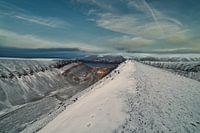 Longyearbyen photographed from the mountain SarkofagenKai Müller
Longyearbyen photographed from the mountain SarkofagenKai Müller Hiorthamn SvalbardKai Müller
Hiorthamn SvalbardKai Müller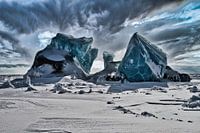 Pack ice in the AsgardbuktaKai Müller
Pack ice in the AsgardbuktaKai Müller Reindeer herd in Pasvik National ParkKai Müller
Reindeer herd in Pasvik National ParkKai Müller Light over the bay in Asgard on SvalbardKai Müller
Light over the bay in Asgard on SvalbardKai Müller Northern Lights on the Lofoten IslandsKai Müller
Northern Lights on the Lofoten IslandsKai Müller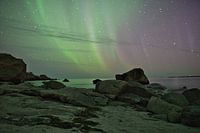 Uttakleiv on the Lofoten under the northern lightsKai Müller
Uttakleiv on the Lofoten under the northern lightsKai Müller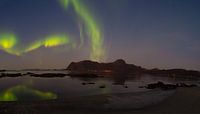 Intense northern lights on the Lofoten IslandsKai Müller
Intense northern lights on the Lofoten IslandsKai Müller thunderstorms with strong gustsKai Müller
thunderstorms with strong gustsKai Müller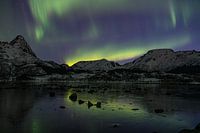 Aurora Borealis before the mountainsKai Müller
Aurora Borealis before the mountainsKai Müller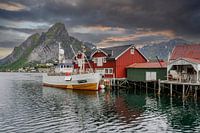 WhalersKai Müller
WhalersKai Müller Mountain range on the LofotenKai Müller
Mountain range on the LofotenKai Müller Reine LofotenKai Müller
Reine LofotenKai Müller Northern lights over the lighthouse of SlettnesKai Müller
Northern lights over the lighthouse of SlettnesKai Müller HallingskeidKai Müller
HallingskeidKai Müller













 Photo wallpaper
Photo wallpaper Photography
Photography Serene Peace
Serene Peace Wildlife photography
Wildlife photography









